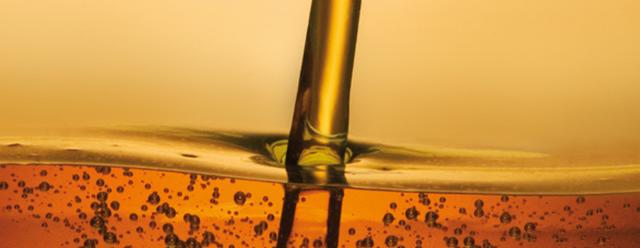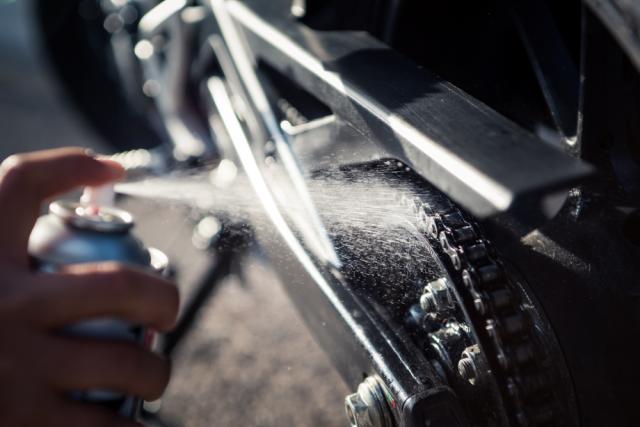ESTILUBE
The ESTILUBE range consists of mono- and polyol esters for application in industrial lubricants. Applications may also be found in other areas such as bicycle chain lubricants and other lubricants for the leisure markets.
ESTILUBE esters are primarily applied as lubricity additives and film-forming components in the lubricant formulation.
The low-viscosity ESTILUBE esters also works as penetration additives in rust release fluids and in corrosion protection agents.
The ESTILUBE L-series
The ESTILUBE L-series covers a range of monoesters with a low odor and a low content of residual alcohol.
Products in the L-series are primarily based on ‘narrow cut’ fatty acids. This means that a superior product quality is obtained with no light boilers or heavy residues.
Most products in the ESTILUBE L-series have a very low iodine value and shows excellent oxidation stability.


The ESTILUBE P-series
are based on pentaerythritol and selected mono and di-carboxylic acids and are available in varying viscosities. Again, ‘narrow cut’ fatty acids are selected to obtain a superior product quality.
ESTILUBE esters are applied in water-miscible cutting fluids, neat oils, deep-drawing lubricants, grinding fluids, release agents, additive packages, de-watering fluids, rust removers, aerosols, and many other areas, where lubricity is needed.
Want to know more?
|
ESTILUBE Grade |
Raw material base |
Flash point (°C) |
Acid value (mg KOH/g) |
Viscosity (cSt/40°C) |
Pour point (°C) |
Density (20°C) |
Iodine value (gI2/100g) |
Bio-based Carbon* | Properties |
|
L210 |
Short-chain saturated |
138 |
0,5 |
2,9 |
-8 |
0,854 |
<1 |
|
|
|
L245 |
Short-chain saturated |
130 |
0,1 |
3 |
<30 |
0,865 |
<1 |
|
|
|
L290 |
Short-chain saturated |
130 |
0,5 |
4 |
9 |
0,872 |
55 |
|
|
|
L300 |
Short-chain saturated |
170 |
0,2 |
4,9 |
-30 |
0,860 |
<1 |
|
|
|
L320 |
Long-chain unsaturated |
190 |
0,5 |
7 |
-17 |
0,870 |
75 |
|
|
|
L360
|
Long-chain unsaturated |
160 |
0,2 |
9,0 |
-12 |
0,864 |
45 |
|
|
|
L360 S |
Long-chain semi- saturated |
190 |
0,3 |
8,6 |
<-5 |
0,860 |
40 |
|
|
|
L370 |
Long-chain unsaturated |
220 |
0,5 |
10 |
7 |
0,860 |
<1 |
|
|
|
L400 |
Long-chain saturated |
230 |
0,4 |
16 |
6 |
0,860 |
<2 |
|
|
|
P688 |
Short-chain saturated |
290 |
0,1 |
28,7 |
-7 |
0,959 |
<1 |
|
|
|
P1150 |
Long-chain unsaturated |
260 |
13 |
82 |
<-15 |
0,929 |
60 |
|
|
|
PTO |
Long-chain unsaturated |
290 |
0,4 |
66,2 |
-20 |
0,926 |
87 |
|
|
|
P1600 N |
Long-chain semi- saturated |
270 |
0,8 |
1400 |
-30 |
0,936 |
30 |
|
|
|
Bio-based content in % |
► NO DOT= X ≤ 5 - Synthetic-based ► |
||||||||
Read more about our
Need guidance? Contact our
FAQ about ESTILUBE

What does ESTILUBE lubricant esters bring to my formulation?
The ESTILLUBE esters may be used as base oils in lubricant formulations, or they may be used as lubricant additives in oil-based or water-miscible lubricants.
The ESTILUBE products have different characteristics regarding viscosity, pour point, iodine value (degree of unsaturation), and wetting properties. ESTILUBE esters improves the lubricating properties of the formulation compared with hydrocarbons with the same viscosity, they are biodegradable, and they are free from chemical hazard labelling (CLP labelling).

How do I choose the right ESTILUBE grade?
For application at high temperature in non-aqueous lubricants, ESTILUBE products with a low iodine value are recommended. They have the best oxidation stability, and the saturated structure of the molecules reduces the risk for formation of carbon residues. For aqueous products, where the lubricant normally is exposed for less thermal stress, the ESTILUBE esters with a higher iodine value may be applied.
ESTILUBE esters with a low viscosity and a low iodine value are applied as lubricant additives in stamping fluids based on low-viscosity hydrocarbons.
Get support from
